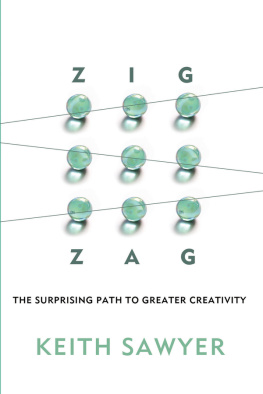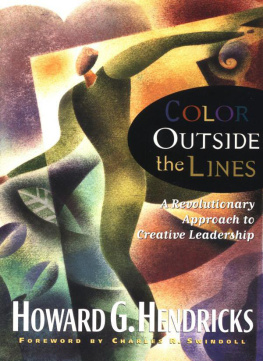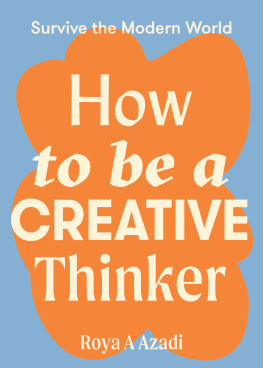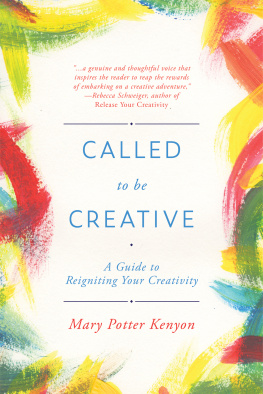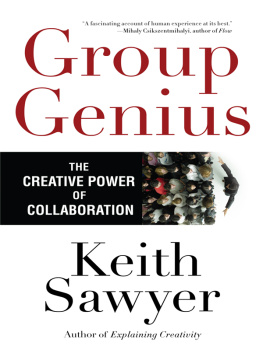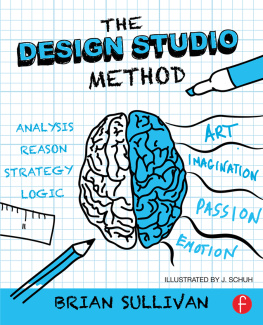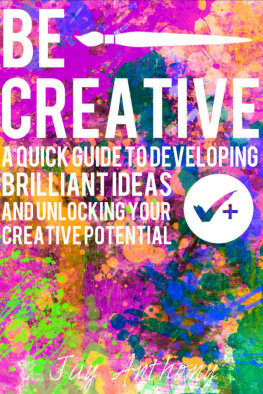
Praise for ZIG ZAG
Finally! A creativity advice book that is grounded in scientific research.
Mihaly Csikszentmihalyi , author, Flow: The Psychology of Optimal Experience
Zig Zag is the most fun and most useful creativity book I have ever read. Keith Sawyer's gem sweeps you up with a host of great stories, quizzes, exercises, and teaches you one way after the other to be more creative.
Robert I. Sutton , professor of Management Science,\break Stanford University; author, Good Boss, Bad Boss and The No Asshole Rule
In geometry the shortest distance between two points is a straight line. But in creative pursuits, Zig Zag shows us, it's anything but. Keith Sawyer is the most creative person writing about creativity I know.
Robert Mankoff , cartoon editor, The New Yorker; author, The Naked Cartoonist: A New Way to Enhance Your Creativity
Creativity is essential in our journey to the future, and this gem of a book helps each of us on the way.
Tim Brown , CEO and president, IDEO; author, Change by Design: How Design Thinking Transforms Organizations and Inspires Innovation
Keith Sawyer is the best combination of a brilliant creativity researcher and storyteller around.
Peter Sims , author, Little Bets: How Breakthrough Ideas Emerge from Small Discoveries
Zig Zag reveals the true nature of the creative process: improvisational, surprising, with unexpected twists and turns. The book is filled with hands-on activities that help you manage that process and keep it moving forward to a successful creative outcome.
Josh Linkner , author, Disciplined Dreaming: A Proven System to Drive Breakthrough Creativity
Cover design by John Hamilton
Cover image: Alicat/iStockphoto
Copyright 2013 by Keith Sawyer. All rights reserved.
Published by Jossey-Bass
A Wiley Imprint
One Montgomery Street, Suite 1200, San Francisco, CA 94104-4594 www.josseybass.com
No part of this publication may be reproduced, stored in a retrieval system, or transmitted in any form or by any means, electronic, mechanical, photocopying, recording, scanning, or otherwise, except as permitted under Section 107 or 108 of the 1976 United States Copyright Act, without either the prior written permission of the publisher, or authorization through payment of the appropriate per-copy fee to the Copyright Clearance Center, Inc., 222 Rosewood Drive, Danvers, MA 01923, 978-750-8400, fax 978-646-8600, or on the Web at www.copyright.com. Requests to the publisher for permission should be addressed to the Permissions Department, John Wiley & Sons, Inc., 111 River Street, Hoboken, NJ 07030, 201-748-6011, fax 201-748-6008, or online at www.wiley.com/go/permissions.
The collaborative sketching figure in Chapter 8 is adapted from figure 2 on page 170 of; Shah, J. J. et al. (2001). Collaborative sketching (C-Sketch). Journal of Creative Behavior, 35(3), 168 198. Copyright Wiley; reprinted with permission.
Limit of Liability/Disclaimer of Warranty: While the publisher and author have used their best efforts in preparing this book, they make no representations or warranties with respect to the accuracy or completeness of the contents of this book and specifically disclaim any implied warranties of merchantability or fitness for a particular purpose. No warranty may be created or extended by sales representatives or written sales materials. The advice and strategies contained herein may not be suitable for your situation. You should consult with a professional where appropriate. Neither the publisher nor author shall be liable for any loss of profit or any other commercial damages, including but not limited to special, incidental, consequential, or other damages. Readers should be aware that Internet Web sites offered as citations and/or sources for further information may have changed or disappeared between the time this was written and when it is read.
Jossey-Bass books and products are available through most bookstores. To contact Jossey-Bass directly call our Customer Care Department within the U.S. at 800-956-7739, outside the U.S. at 317-572-3986, or fax 317-572-4002.
Wiley publishes in a variety of print and electronic formats and by print-on-demand. Some material included with standard print versions of this book may not be included in e-books or in print-on-demand. If this book refers to media such as a CD or DVD that is not included in the version you purchased, you may download this material at http://booksupport.wiley.com. For more information about Wiley products, visit www.wiley.com.
Library of Congress Cataloging-in-Publication Data
Sawyer, R. Keith (Robert Keith)
Zig zag : the surprising path to greater creativity / by R. Keith Sawyer, Ph.D.
pages cm
Includes bibliographical references and index.
ISBN 978-1-118-29770-4 (cloth), 978-1-118-53911-8 (ebk.), 978-1-118-53922-4 (ebk.),
978-1-118-53926-2 (ebk.)
1. Creative ability. I. Title. II. Title: Zig zag.
BF408.S288 2013
153.35 dc23
2012042028
first edition
To my son, Graham
Introduction
Choosing Creativity
Ineffective people live day after day with unused potential. They experience synergy only in small, peripheral ways in their lives. But creative experiences can be produced regularly, consistently, almost daily in people's lives. It requires enormous personal security and openness and a spirit of adventure.
Stephen Covey
Creativity doesn't always come naturally to us. By definition, creativity is something new and different; and although novelty is exciting, it can also be a little scary. We're taught to choose what's familiar, to do what's been done a thousand times before. Soon we're so used to staying in that well-worn rut that venturing into new terrain seems an enormous and risky departure.
But rest assuredyou already have what it takes to be creative. Neuroscience and psychology have proven that all human beings, unless their brain has been seriously damaged, possess the same mental building blocks that inventive minds stack high to produce works of genius. That creative power you find so breathtaking, when you see it tapped by others, lives just as surely within you. You only have to take out those blocks and start playing with them. How, though?
In fact, the journey's pretty simple. In this book, I share with you the eight steps that are involved in being creative. Once those steps become second nature to you, creativity won't seem rare and magical and daunting. You'll stop being scared of writer's block or stupid ideas or a blank canvas or a new challenge, and your creative power will be flexible, versatile, and available in unlimited supply. All you have to do is learn how to tap it. And that's the purpose of the exercises in Zig Zag.
I started thinking about creativity many years ago, when I graduated from MIT with a computer science degree and found myself designing video games for Atari. Since then I've played jazz piano and studied how jazz musicians collaborate; earned a doctorate in psychology at the University of Chicago and studied how Chicago's improv companies create on the spot; researched theories of creativity in education; and studied how artists and sculptors teach creativity.
No matter what kind of creativity I studied, the process was the same. Creativity did not descend like a bolt of lightning that lit up the world in a single, brilliant flash. It came in tiny steps, bits of insight, and incremental changes.
Next page
